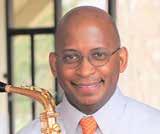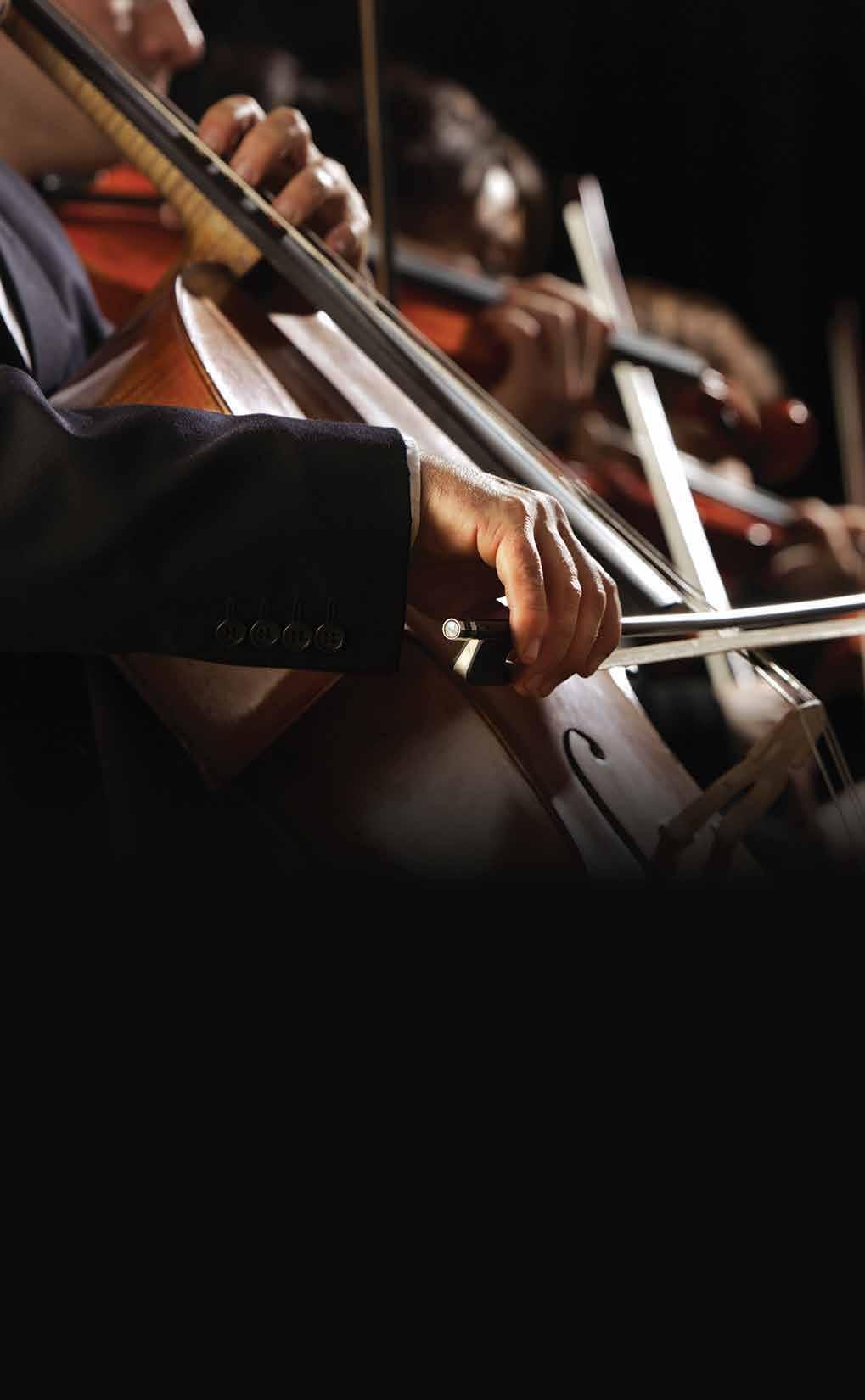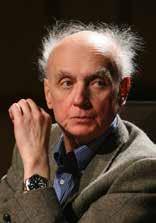DINA GILBERT USIC DIRECTOR & C ONDUCTO R


DINA GILBERT USIC DIRECTOR & C ONDUCTO R
















Dear Music Lovers,
As the Walla Walla Symphony’s newly appointed Music Director & Conductor, I am honored to invite you to our 118th season, Roots and Horizons. Creating this season has been a deeply inspiring journey, drawing from the rich heritage and vibrant community that makes the Walla Walla Symphony truly exceptional.
I am profoundly moved by the legacy and character of our orchestra, known for “punching above its weight” with innovative programming and world-class guest artists. I am equally inspired by our commitment to nurturing future musicians and music-lovers through extensive free music programs like the Walla Walla Symphony Youth Orchestra and the SPARK! Composition Course.
“Blue Mountains”, led by guest conductor Nadège Foofat, we’ll celebrate the 100th anniversary of Gershwin’s Rhapsody in Blue with pianist Stephen Beus and feature Jennifer Higdon’s Cold Mountain Suite, a Walla Walla Symphony co-commission. In February, you’ll experience moving works by Samuel Coleridge-Taylor and Elgar, along with a premiere of Ryan M. Hare’s Concerto for Alto Saxophone featuring Dr. Otis Murphy and guest conductor Julien Benichou.
A central theme this season is deepening our connection with the Walla Walla community and its stunning landscapes.
We’re excited to premiere works by Beatrice Luongo (age 10) and Teresa Wheeler (age 16), alongside rising stars Sam Wu and Anna Clyne in our opening concert. We’re also thrilled to welcome artists such as Time for Three, the Canadian Brass, and tabla player Sandeep Das. These artists will not only perform on stage at Cordiner Hall but will engage with our community, providing invaluable learning and collaboration opportunities, including welcoming young musicians at our familyfriendly holiday concert.
A central theme this season is deepening our connection with the Walla Walla community and its stunning landscapes. The theme “Place of Many Waters” inspired me to pair new works on water with Rimsky-Korsakov’s colorful Scheherazade in our first concert, “Tides & Tales.” In
We will finish off the season by offering unique perspectives on symphonic music. “Alma & Gustav” in March will transport you into a graphic novel with 800 projected illustrations that illuminate Alma Mahler’s life, paired with two of her lieder and a new reduction of her husband Gustav’s Symphony No. 5. Our season finale “Earth, Water, Wind, & Fire” will culminate in a crescendo of works representing the elements, ending with Stravinsky’s Firebird Suite.
I look forward to joining the WWS musicians on stage to present these timeless works alongside new favorites and can’t wait to share it all with you.
If you hear a French-Canadian accent or see me with my partner David and baby Clara, please say hello! I’d love to hear your favorite coffee spot, debate hockey vs. baseball, and chat about your impressions of our new symphonic adventures.
Dina Gilbert Music Director & Conductor
Dina Gilbert is a FrenchCanadian conductor passionate about communicating with audiences of all ages to broaden their appreciation of orchestral music through innovative collaborations. This commitment, combined with her extensive knowledge of repertoire, has shaped both her career and the orchestras she has worked with. Regularly invited to conduct in Canada and overseas, she attracts critical acclaim for her energy, presence on the podium, and expressive music-making.
Dina Gilbert was previously Principal Conductor of the Grands Ballets Canadiens and Music Director of the Kamloops Symphony, where she is known for her contagious dynamism and bold programming. Over the years, Dina has conducted many major Canadian orchestras as well as orchestras in the United States, Colombia, Spain, France, and Japan.
Her innate curiosity about non-classical musical genres and her willingness to make classical music more accessible to everyone have sparked collaborations with the Orchestre Philharmonique de Radio France and the Orchestre national de Lyon in several Hip-Hop Symphonic programs featuring renowned artists I AM, MC Solaar, Youssoupha, and Bigflo & Oli. She has also conducted the world premiere of the film The Red Violin with orchestra and soloist Lara St John, as well as the North American premiere of the film The Artist.
As the founder and artistic director of Ensemble Arkea, a Montrealbased chamber orchestra, Dina has premiered over thirty works by emerging Canadian composers. Committed to music education, she has engaged thousands of children with her interactive Conducting 101 workshops. From 2013 to 2016, Dina Gilbert was the assistant conductor of the Orchestre symphonique de Montréal and Maestro Kent Nagano, also assisting notable guest conductors, including Zubin Mehta and Sir Roger Norrington.

Recent highlights include debuts with the National Arts Centre Orchestra and the Orchestre national des Pays de la Loire, a tour with the Orchestre national de Metz, and several concerts with the Orchestre symphonique de Montréal and the Orchestre symphonique de Québec.
In the 2024-2025 season, she takes the helm of the Walla Walla Symphony as their newly appointed Music Director & Conductor, and will debut with the Newfoundland Symphony Orchestra and the Cape Symphony, along with concerts and recordings with the Orchestre symphonique de Montréal.
Dina Gilbert earned her doctorate from the Université de Montréal and polished her skills in masterclasses with Kenneth Kiesler, Pinchas Zukerman, Neeme Järvi, and the musicians of the Kritische Orchester in Berlin. Awarded the Opus Prize for ‘Découverte de l’année’ (Discovery of the Year) in 2017, she has received support from the Canada Arts Council, the Conseil des arts et des lettres du Québec, and the Père-Lindsay Foundation.
Dina Gilbert’s inaugural season is supported in part by the Katherine and Walter Weingart Guest Artist Endowment.
Maestro Chair
Richard, Helene, Jay and Bryan Jaffe
Robert, Carol, Jonathon and Eric Jaffe
Violin I
Concertmaster: Henrietta Baker Kennedy
Memorial Chair
Mary Ann Ringgold Memorial Chair
Carroll N. Baker Memorial Chair
Dayl B. Graves Memorial Chair
Frances E. Casper Memorial Chair
Beulah K. Scheece Memorial Chair
Violin II
Principal: Robert C. and Iris Myers and Agnes V. Little Memorial Chair
Viola
Principal: Walter and Elizabeth Egg Memorial Chair
Dorothy and James Swayne Memorial Chair
Cello
Principal: Grace Lazerson Memorial Chair
Harold E. Crawford Family Chair
Mary Hooper Meeker Memorial Chair
Bass
Principal: Don and Claudia Tucker Chair
Flute
Principal: Louis B. Perry Family Chair
Oboe
Principal: Emma Jane Brattain Memorial Chair
Clarinet
Principal: William Tugman Memorial Chair
Bassoon
Principal: Helen Shepherd Trust Memorial Chair
French Horn
Principal: Coffey Communications Chair
Trumpet
Principal: Father Joseph Da Lio Memorial Chair
Trombone
Principal: Dr. Philip and Leona Siegel Memorial Chair
Timpani
Principal: Jack Williams Memorial Chair
Percussion
Principal: Mike and Sue Gillespie Chair
Piano
Perla Hill Simon Chair
Harp
Principal: Edward Foster Memorial Chair
2024-2025 Walla Walla Symphony
Jackie Wood, President
Tricia Rice, Vice-President
Cynthia Westerbeck, Secretary
Kim Heidenrich, Treasurer
Mark Brucks
Andrew Dankel-Ibañez
Alex DeMambro
Jack Iverson
Helen Kim
Jamey Lamar
Albert Marshall
Pedrito Maynard-Reid
Richard Middleton-Kaplan
Michelle Morales
Chris Otis
George Perez
Lacey Perry
Lucia Ramirez
Kathryn Unbehaun
Dina Gilbert, Music Director & Conductor (ex-officio)
William Berry, Musician Liaison (ex-officio)
2024-2025 Walla Walla Symphony Staff
General Manager
Leah Davis
Patron Relations Manager
Rachel Condie
Program Coordinator
Emily James
Music Director & Conductor
Dina Gilbert
Youth Orchestra Conductor
Bruce Walker
Volunteer Coordinator
Susan Greene
Music Librarian
Laura Rose-Grabinski
Production Assistant
Kainoa Kawabata
Teaching Artists
Stefanie Crumpacker-Flerchinger
Rebecca Fuquay
Lori Parnicky
Sara Pinkerton
Chris Schulz
Kristin Vining
Violin
Vanessa Moss, concertmaster+
Việt Block, assistant concertmaster+
Amy Dodds, principal second+
Jemima Bauer
Holly BlackwelderCarpenter+
Luba Brunton+
Caleb Condie+
Tara Cross
Martessa Davis
Ruth Dotson
Linnea Gatmon-Sandrock
Abby Herrick
Dalene Johnson+
Eliana Kearns
Amanda Kitto
Emily Knudsen
Chantell Lopez+
Craig Nelsen+
Anna Okada
Grace Palmer Dostal
Reynaldo Patiño+
Elizabeth Potter
Tricia Rice+
Samuel Schafer+
Amanda Simmons
Alyssa Stremcha+
Sam Thackston
Lauren Trujillo
Becky Wiessner+
Ken Wright
Viola
Lucia Orr, principal+
Mark Becknazarov
Gabrielle Bedolla
Kainoa Kawabata
Caleb King+
Hans Klein+
Mariya Ksondyzk
Emily Kurlinski Haun+
Lyn Ritz+
Angie Schauer+
Dan Wing
Cello
Ed Dixon, principal+
Leah Davis+
Melva Lou Drury+
Keziah Eckert
Lauren Edmondson+
Ben Gish+
Olga Grigoryan
Seidy Morales
Sally Singer Tuttle
Bruce Walker+
Bass
Josh Skinner, principal+
Alan Feves+
Annie Harkey Power
Jack Koncel
Dianna Lysgaard
Marella McGreal+
Leslie Stone
Julie Woods+
Flute
Leonard Garrison, principal+
René Miska
Lori Parnicky+
Sophia Tegart
Oboe
Pablo Izquierdo, principal+
Karen Strand
Ryan Zwahlen
Clarinet
Shannon Scott, principal+
David Bergmann
Jennifer Crockett
Roger Garcia
Katsuya Yuasa
Bassoon
Ryan M. Hare, principal+
Kirsten Boldt-Neurohr+
Mark Eubanks
Horn
Martin King, acting principal+
Burke Anderson
Cassidy Fairchild
Eric Jauhiainen
Dean Kravig
Paul Luongo
Rebekah Schaub+
Kim Snow+
Kyli White
Trumpet
William Berry, principal+
Kate Jackson
+ indicates members of the core orchestra
James Smock+
Trombone
Dave Glenn, principal+
David Bryan
Dick Counsell+
Bill Gilbert+
Doug Scarborough
Tuba
Torrey Lawrence, principal+
Timpani
Christopher Wilson, principal+
Warren Murray
Andrew Spender
Percussion
Josh Gianola, principal+ Marybeth Norby+
Rebekah Jillson
Warren Murray
Aaron Rausch
Andrew Spencer
Piano
Jackie Wood, principal+ Karlyn Bond
Feng Kang
Organ Kraig Scott
Harp
Chelsea Spence-Crane, principal+ Miriam Gentle

Honor Band Festival Concert
February 8, 2025, 4 PM
Walla Walla University Church
Young Artist Night
February 23, 2025, 7 PM
Melvin K. West Fine Arts Center Auditorium
Choir and Orchestra Winter Concert
March 8, 2025, 4 PM
Walla Walla University Church
Friends of Broadway: Voice Recital
March 11, 2025, 7:30 PM
Melvin K. West Fine Arts Center Auditorium
Faculty Piano Recital: Karlyn Bond
April 8, 2025, 7 PM
Walla Walla University Church
Chamber Music Recital
May 10, 2025, 7 PM
Melvin K. West Fine Arts Center Auditorium
Spring Choral Concert
May 17, 2025, 5 PM
Walla Walla University Church
Wind Symphony Concert
May 31, 2025, 5 PM
Walla Walla University Church
Symphony Orchestra Concert
June 5, 2025, 7:30 PM
Walla Walla University Church

The Walla Walla Symphony delights and challenges our community by providing live orchestral performances and opportunities for learning about music.
We will cultivate a growing appreciation for symphonic music in Walla Walla by attracting enthusiastic audiences to programs of the highest artistic quality and by providing wonderful experiences and deep and rich education programs for the benefit of the Walla Walla community.
We strive for inclusion, diversity, and equity as we support and promote orchestral music, artistry, and music education in our community. We bring these values into our planning, dialogue, decision-making, programming, outreach, staffing, assessments, and study of emerging new practices.
The Walla Walla Symphony is committed to centering relationships with our communities as we work to build connections through music. We envision creating welcoming spaces that offer a sense of belonging where all are valued regardless of age, race, gender, religion, sexual orientation, ability, economic status, political affiliation, or education.
We believe that orchestral music is more relevant and alive when it honors tradition while embracing new ideas. We strive to work towards unraveling a history of exclusivity prevalent in classical music and we will continue our pursuit of diversity, equity, inclusion, and belonging through learning, listening, and engaging.
We recognize that, at present, neither the musicians, the audience, the board, nor the staff of the Walla Walla Symphony fully reflect the diversity that is present in our valley. We want to transform our relevance to the diverse communities we serve.

Tuesday, February 4, 2025 | 7 p.m. at Cordiner Hall
Julien Benichou, Guest Conductor Otis Murphy, Alto Saxophone
• Samuel Coleridge-Taylor –Ballade in A Minor
• Ryan M. Hare – Concerto for Alto Saxophone and Orchestra
• Sir Edward Elgar – Variations on an Original Theme, Op.36, Enigma
Born August 15, 1875, in Holborn, London, England Died September 1, 1912, in Croydon, Surrey, England
Last WWS Performance: First performance at tonight’s concert Approximate Length: 12 minutes
This work dates from 1898. It is scored for piccolo, two flutes, two oboes, two clarinets, two bassoons, four horns, two trumpets, three trombones, tuba, timpani, percussion, and strings.
Composer Samuel Coleridge-Taylor, not to be confused with the poet Samuel Taylor Coleridge, was one of the most celebrated musicians of his day. Born in London to an English mother and a Sierra Leonean physician father, Taylor was of mixed race. The young child was raised by his mother and her parents, as his father had returned to Africa before learning that he was to become a father.
Coleridge, as he was known to all, entered the Royal College of Music at 15 and studied under composer Charles Villiers Stanford. After graduation he soon began a conducting career, but he soon gained notoriety as a composer. Edward Elgar and publisher August Jaeger were important early champions of Taylor’s music. His 1898 Hiawatha’s Wedding Feast became popular in Europe and the United States, which led Taylor to make three tours of the U.S. He became interested in his father’s heritage as a descendent of former American slaves who had repatriated to Africa.

Despite worldwide success, Taylor’s financial situation was dire. He died at 37 of pneumonia. A memorial concert at Royal Albert Hall was held to raise funds for the family he left behind at his death. £1400 were raised, which is roughly $43,000 in 2023. His legacy includes the passage of copyright laws in the U.S. and U.K., as Taylor sold the rights for Hiawatha’s Wedding Feast for only 15 guineas. His music is currently enjoying a well-deserved resurgence.
When Samuel Coleridge-Taylor entered the Royal College of Music he began writing music very quickly. In his first year he wrote and published six choral works. Notice from this music led to his first commission. The Three Choirs Festival had asked Elgar to compose a new work, but he was too busy. He wrote to the director, “I wish, wish, wish you would ask Coleridge-Taylor to do it. He still wants recognition, and he is far and away the cleverest fellow going amongst the young men.”
Coleridge-Taylor composed his Ballade in A Minor for the event. Far from the character of the Chopin ballades, this dazzling work is a wild and clever piece written in stanzas but infused with energetic rhythms and charming themes.
© 2024 Orpheus Music Prose & Craig Doolin, www.orpheusnotes.com
Conductor Julien Benichou brings natural musicality, infectious energy, and a creative approach to fostering the next generation of musicians. He serves as General and Artistic Director of the Washington Opera Society (WOS) and Music Director of the Chesapeake Youth Symphony Orchestra (CYSO).
As a guest conductor, Benichou has earned acclaim for his work with the New York City Ballet, Annapolis Symphony, Ballet Theatre of Maryland, Baltimore Concert Opera, and Baltimore Symphony Orchestra’s collaborations with Mobtown Modern Synchronicity. Internationally, he has conducted the Orquestra Sinfônica do Paraná (Brazil), St. Petersburg and Siberian State Symphonies (Russia), Free State Symphony (South Africa), and Portuguese Philharmonic in Paris and Portugal. Upcoming engagements include appearances with the Dallas Symphony, Pasdeloup Orchestra (Paris), and Marseille Chamber Orchestra.
During his 17 seasons as Music Director of the Mid-Atlantic Symphony, Benichou raised the orchestra’s profile through collaborations with artists such as Stefan Jackiw, Leon Fleisher, and Brandie Sutton. He has also led acclaimed productions of Aida, Faust, and Carmen, featuring artists like Lisa Chavez, Kevin Short, and Jonathan Tetelman.
An advocate for new music, Benichou has premiered numerous works, including Lalo Schifrin’s Mandolin Concerto. He is equally at home in crossover projects, collaborating with artists such as Loreena McKennitt, Sara McLachlan, and Robert Redford, including the premiere of Way of the Rain at Carnegie Hall and in Monaco.
As an avid advocate for music education, Benichou has worked extensively with the CYSO to bring unmatched experiences to young musicians. He has taken the CYSO on six different European tours through invitations by several prestigious festivals in France, in

addition to side-by-side concerts with the Orchestre des Jeunes de Montréal and the St. Petersburg State Symphony. Under his leadership, the CYSO has performed at Carnegie Hall on numerous occasions.
Benichou holds a Graduate Performance Diploma from the Peabody Institute and a master’s degree from Northwestern University, with additional studies at Yale University and the Panula Academy in Finland. He has worked with esteemed mentors, including Leonard Slatkin, Yuri Temirkanov, Marin Alsop, Michael Tilson Thomas, and JoAnn Falletta.
Before coming to the United States, he trained in France with Roland Hayrabedian and Pol Mule at the Marseille Conservatory and JeanSébastien Béreau at the Rueil-Malmaison Conservatory, as well as privately with Yves Cohen. He also studied harmony and counterpoint with Pierre Doury at the Schola Cantorum in Paris.
Benichou became a US Citizen in 2016. When not traveling between conducting engagements, he shares his time between his homes in Baltimore, MD and in the French region of Provence.
Born in 1970, in Reno, Nevada
Concerto
Saxophone and Orchestra (2022)
I. Deliberate.
II. Pensive, but not too slow.
III. Very lively, but not too fast.
Last WWS Performance: World Premiere at this concert
Approximate Length: 22 minutes
Otis Murphy’s appearance is made possible by the WW Symphony Guest Composer/Artist FundUnderrepresented Voices
This work is scored for solo alto saxophone, flute, piccolo, oboe, English horn, clarinet, bass clarinet, bassoon, contrabassoon, two French horns, one trumpet, two trombones, timpani, percussion, piano, and strings.
Commissioned by the Walla Walla Symphony (WWS), with funding generously provided by Richard D. Simon, M.D., this Concerto for Alto Saxophone and Orchestra was completed on March 23, 2022, with the bulk of sketching and composing of the first movement done in 2021. The Concerto is dedicated to the WWS and also to one of my favorite places, the beautiful city of Walla Walla, Washington. Additional small revisions to the score were made in 2023 and 2024.
During the COVID-19 pandemic, when concerts were canceled worldwide and all my musician friends and I were abruptly out of work, I composed a series of short, unaccompanied pieces, entitled “Lyric Études,” for any musician who requested one. The idea was to nurture the musical

relationships that we all missed during the time live musical performances were impossible.
The fifth of these, composed in 2020, is for saxophone. In many of these pieces, I already heard a latent potential in them to be expanded somehow into larger-scale compositions. Dr. Simon was so taken with Lyric Étude No. 5 that he decided to find a way for this idea to be realized, for me to compose a concerto for the WWSO making use of the themes and motifs from the fifth étude. I am extraordinarily grateful to him for his enthusiasm for my music, and for making this project happen!
In most concertos, the soloist is treated more or less as the protagonist of an imaginary narrative or conflict, and this concerto is no exception. While I often encourage the listener to imagine for themselves, if they wish, images or stories to accompany my music while they listen, it does seem worth sharing the dramatic concept I had in mind for this concerto from the earliest sketches. The first movement represents the soloist/ protagonist in peril: a risky situation, freely accepted and undertaken. The soloist reveals great confidence and ability, but as the course of the movement proceeds the risk only increases, and the movement ends with a feeling of unresolved anxiety.

The second movement represents the turning point; the soloist must look inward to find resolution. There is an epiphany, and the movement ends in an atmosphere of richly earned calm. The third movement, then, might be described as none other than “time to party!” The difficulties overcome are not forgotten, but the music I hope conveys a sense of fun, and ultimate acceptance.
Ryan M. Hare
Otis Murphy holds the position of Professor of Saxophone and Chair of Woodwinds in the Indiana University Jacobs School of Music, joining the faculty at the age of 28 and becoming one of the youngest faculty members in its history. He has performed in more than 20 countries worldwide across four continents: North America, Europe, Asia, and Australia.
Dr. Murphy was a prizewinner in national and international competitions and has performed in venues including Carnegie Hall, Merkin Hall (New York City), Casals Hall (Tokyo); and Palau de la Musica (Valencia). Dr. Murphy has performed on more than 15 recordings, including four solo albums receiving critical acclaim. He performed Ellen Taaffe Zwilich’s Quintet for Alto Saxophone and String Quartet with Pacifica Quartet on their album,


509.525.4160
Contemporary Voices, winning the Grammy Award for Best Chamber Music/Small Ensemble Performance.

Dr. Murphy has taught as a guest professor at music schools worldwide, including the Paris Conservatory, Amsterdam Conservatory, Cologne Academy of Music, London Royal College of Music and many more, and his students have received awards and have careers as performers, educators throughout the world. Dr. Murphy and his wife, pianist Haruko Murphy, live in Bloomington, Ind., as dedicated parents of their six children.


Born June 2, 1857, at Broadheath, near Worcester, England
Died February 23, 1934, at Worcester, England
Last WWS Performance: October 7, 2014
Approximate Length: 30 minutes
This work was first performed on June 19, 1899, in St. James Hall in London, England, with Hans Richter conducting. In addition to solo violin, it is scored for piccolo, two flutes, two oboes, two clarinets, three bassoons, four horns, three trumpets, three trombones, tuba, timpani, percussion, organ (optional), and strings.
Sir Edward Elgar is considered by many to have been the quintessential English composer. His music is filled with the stirring themes that make one think of all the pomp of circumstance of coronation, the beauty of the English countryside, and the reserved sophistication that represents British-ness in the minds of many. However, his own countrymen were slow to accept his music. He was nearly 50 years of age before his reputation was sealed with the premiere of one work – the Enigma Variations.
As many have explained, there are three puzzles in this work. Elgar’s main theme, which returns in various guises throughout the work, is entitled “Enigma,” but no solution is given as to its meaning. Most scholars believe that the puzzle is simply a musical setting of the rhythm of the composer’s own name. Elgar’s other two enigmas are perhaps best explained using his own words:
“It is true that I have sketched for their

amusement and mine the idiosyncrasies of fourteen of my friends, not necessarily musicians, but this is a personal matter and need not have been mentioned publicly. (The initials, however, appear in the printed score.) The variations should stand simply as a ‘piece’ of music. The Enigma I will not explain. Its dark saying must be left unguessed, and I warn you that the apparent connection between the variations and the theme is often of the slightest texture. Further, through and over the whole set another and larger theme ‘goes,’ but is not played. So the principal Theme never appears, even as in some late dramas – e.g. Maeterlinck’s L’Intruse and Les Sept Princesses – the chief character is never on the stage.”
As to the larger enigma, it remains unsolved. However, the smaller puzzle of connecting initials to Elgar’s friends was cracked by the composer himself when he revealed the solution in 1920. Presented below, each musical variation reflects certain defining characteristics of each of its subjects.
Variation I (C.A.E.): Caroline Alice Elgar was the composer’s wife. The tender and sentimental quality of this variation blends seamlessly with the theme.

Variation II (H.D.S-P): Elgar’s pianist friend Hew David Steuart-Powell was a pianist who played trios with Elgar (violin) and Basil G. Nevinson (cello). The pianistic type of runs in the violins at the opening suggests the exercises of Steuart-Powell, warming up his fingers.
Variation III (R.B.T.): Richard Baxter Townshend was an actor whose voice was capable of unusual changes of pitch. He was also known for his incessant ringing of a bell as he rode a tricycle around Oxford. Upper strings and woodwinds state the variation, followed by growling basses.
Variation IV (W.M.B.): R.B.T.’s brother-inlaw, William Meath Baker, was a man of great energy and one fiery in argument. His eccentricities, especially his habit of slamming doors in anger, are expressed in this musical portrait, relying on brass and heavy timpani.
Variation V (R.P.A.): Richard Penrose Arnold, son of Matthew Arnold, was a man of changing moods and comic witticisms. His characteristic laugh is heard in this variation.
Variation VI (Ysobel): Isabel Fitton was a very tall viola student for whom Elgar wrote a set of practice exercises. Both the exercise and her stature are reflected in this viola-centric variation.
Variation VII (Troyte): Arthur Troyte Griffith was an architect who designed Elgar’s house at Malvern. He was a man of excitable and tempestuous temperament, who dabbled as an amateur pianist. Elgar gave noble effort to help this dear friend learn to play the instrument, but these efforts led inevitably to an exasperated slam of the keyboard lid.
Variation VIII (W.N.): Elgar’s neighbor, Winifred Norbury, is honored with a variation that pays homage to her gracious old-world courtesy. It leads without pause to the most famous of Elgar’s variations.
Variation IX (Nimrod): This most eloquent of all the variations is a tribute to the composer’s close friend, A.J. Jaeger,
editor of The Musical Times and adviser to the firm of Novello, which published many of Elgar’s compositions. (In German “Jaeger” means “hunter – thus the reference to “Nimrod” the mighty hunter.)
Variation X (Dorabella - Intermezzo): Dorabella refers to Miss Dora Penny, the daughter of a local parson. Elgar favored the nickname “Dorabella” because of the reference to the bright practicality of Mozart’s character in Cosi fan tutte. Even her pronounced stammer is reflected in this variation.
Variation XI (G.R.S.): Dr. George Robertson Sinclair was the organist of Hereford Cathedral, who was also known for his loveable bulldog named Dan. The chordal brass suggests the sound of the organ, while the playful and puckish string writing represents Dan. A delightful story relates how Dan rolled down the bank of the River Wye, only to swim upstream to the shore where he barked loudly.
Variation XII (B.G.N.): Basil G. Nevinson was a cellist who played in Elgar’s piano trio. Elgar described this variation as "a tribute to a very dear friend whose scientific and artistic attainments, and the wholehearted way they were put at the disposal of his friends, particularly endeared him to the writer."
Variation XIII (***): The original inscription of a trio of asterisks was later found to mask a reference to Lady Mary Lygon, who was at the time en route to Australia. For the intimate group of friends who could even hope to understand the reference, Elgar inserted a clarinet solo with a phrase from Mendelssohn’s Calm Sea and Prosperous Voyage. The pulse of drums is said to represent the hum of the ship’s engines.
Variation XIV (E.D.U.): The Finale, elaborate and heavily orchestrated, is both a self-portrait and a musical culmination. (“Edoo” was the composer’s wife’s nickname for her husband.) The work ends in a broad presentation of the theme in a stately major key.
© 2024 Orpheus Music Prose & Craig Doolin, www.orpheusnotes.com
Tuesday, March 4, 2025 | 7 p.m. at Cordiner Hall
Born August 31, 1879, in Vienna, AustriaHungary
Died December 11, 1964, in New York City, New York
Born July 7, 1860, in Kaliště, Bohemia, Austrian Empire
Died May 18, 1911, in Vienna, Austria
Alma & Gustav: A symphonic graphic novel by Catherine Varvaro
Pauline Stive, illustrator
Kelly-Marie Murphy, composer/arranger
Yoon Jae Lee, arranger
Melissa Schiel, mezzo-soprano
Last WWS Performance: First performance at tonight’s concert
Approximate length: 75 minutes with no intermission
This work is scored for one piccolo, two flutes, two oboes, one English horn, two clarinets, two bassoons, one contrabassoon, two horns, two trumpets, timpani, two percussionists, harp, strings, and mezzo-soprano.
Prologue: A gleam appeared in the valley
Alma Mahler, Die stille Stadt (arr. Kelly-Marie Murphy)
Melissa Schiel, mezzo-soprano
Chapter 1: The wedding, March 1902
Gustav Mahler, Symphony No. 5, mvt. I
“In the light of the setting sun, her hair seemed like a halo of red flame, and she, herself, like some beautiful beast of prey.”
Chapter 2: Birth, November 1902
Gustav Mahler, Symphony No. 5, mvt. II
“I no longer played the piano, I no longer sang, I no longer moved… I had completely renounced my own existence.”
Chapter 3: Domestic bliss, June 1907
Gustav Mahler, Symphony No. 5, mvt. III
“I have suddenly realized that I
am leading only a semblance of a life.”
Chapter 4: Grief
Gustav Mahler, Symphony No. 5, mvt. IV
“I have lost my way. I can no longer find the bridge to the other side. Someone has taken me roughly by the arm and led me far away – away from myself. And I long to return to where I used to be.”
Chapter 5: La Grande Veuve 1908-1964
Gustav Mahler, Symphony No. 5, mvt. V
“I dragged my hundred songs with me wherever I went like a coffin into which I dared not even look.”
Epilogue: No one knows us thus
Alma Mahler, Bei dir ist es traut (arr. Kelly-Marie Murphy)
Melissa Schiel, mezzo-soprano
“I have a sea of tears in me and where words fail, a river runs through.”
This concert tells the story of Alma SchindlerMahler, a woman of great talent and ambition whose life shows the struggles of women artists in history. Created by Catherine Varvaro, this performance is presented as a symphonic graphic novel, combining Alma’s music, Gustav Mahler’s Symphony No. 5, and over 800 detailed illustrations to share her struggles with family life, being a mother, and being creative. Through this multidisciplinary experience, the audience is invited to reflect on themes of love, loss, and self-discovery.

Alma Schindler was a talented composer and artist in her own right, but her marriage to Gustav Mahler brought unexpected challenges. Gustav, a renowned composer and conductor,
Continued on page 16
Mezzo-soprano Melissa Schiel has established herself as a concert soloist, stage performer, and recitalist. Past chamber and orchestral highlights include Wagner’s Wesendonk Lieder, Berlioz’s Les Nuits d’éte, Mahler’s Lieder eines fahrenden Gesellen, De Falla’s El Amor Brujo, Elgar’s Sea Pictures, Mahler’s Symphony No.2, and Verdi’s Requiem. Since 2011, Schiel has enjoyed performing with many ensembles in the Pacific Northwest including Fairbanks Symphony Orchestra, Rainer Symphony Orchestra, Yakima Symphony Orchestra, Salem Chamber Orchestra, Wenatchee Valley Symphony Orchestra, Seattle Metropolitan Chamber Orchestra, and Orchestra Seattle. In Canada and the USA, she sang operatic roles such as Dorabella (Così fan tutte), Cherubino (Le Nozze di Figaro), Dritte Dame (Die Zauberflöte), Olga (Eugene Onegin),

The Fox (The Cunning Little Vixen), Maddelena (Rigoletto), Zita (Gianni Schicchi), Dinah (Trouble in Tahiti), The Old Lady (Candide), and Mrs. Herring (Albert Herring). She premiered the role of Estelle Oglethorpe in Later the Same Evening, an opera inspired by the work of American artist Edward Hopper by American composer John Musto. In addition to performing, Schiel enjoys working with future stage performers, musical artists, and music educators in her role as Associate Professor in the music department at Central Washington University.
Lawson Knight 509-524-8277
206 S 3rd Ave
Walla Walla, WA
Carolyn Stiver 509-525-2360
30 W Main St, Ste 102
Walla Walla, WA
Hank Worden 509-529-9900
109 S 2nd Ave
Walla Walla, WA





demanded that Alma abandon her own music to support his career. Despite her initial reluctance, Alma complied, putting her compositions into a cherished briefcase that once belonged to her father. Her story connects with many women artists whose potential was overshadowed by societal expectations and personal sacrifices.
The narrative changes significantly with the birth of Alma’s daughter, Maria Anna, followed by the child’s untimely death at age five. These events deeply affected Alma, as illustrated in the performance through music and imagery. Struggling to reconcile her life as a wife, mother, and artist, Alma navigates a confusing alternate reality, torn between her dreams and her obligations. Her journey is a testament to strength and lasting creativity.
Central to this performance is Gustav Mahler’s Symphony No. 5, a work that reflects the deep emotions of the Mahler household. The symphony is presented in its entirety, using a reduced orchestration by Yoon Jae Lee, serving as the musical canvas for Alma’s story. The fourth movement, the Adagietto, often interpreted as a love letter from Gustav to Alma, offers a moment of tenderness amidst the turmoil, while the symphony’s triumphant finale symbolizes the possibility

of hope and renewal.
Interwoven with Mahler’s symphony are two songs composed by Alma herself: Die stille Stadt and Bei dir ist es traut, arranged for orchestra by Kelly-Marie Murphy. These pieces bookend the performance, providing a glimpse into Alma’s musical voice and underscoring her contributions to the arts.
Pauline Stive’s illustrations bring Alma’s journey to life, transporting the audience into her world. From her idyllic youth to her tumultuous marriage and beyond, the visuals complement the music, creating an experience that shows Alma’s challenges and successes.
This symphonic graphic novel is more than a performance; it is a celebration of Alma Schindler-Mahler’s legacy and a reflection on the challenges faced by women in the arts. Through the combination of music, imagery, and storytelling, the audience is invited to connect with Alma’s story on a deeply personal level, finding resonance in her quest for self-expression and fulfillment.
Portions of these notes are from the Kamloops Symphony’s Light the Night program, used with permission and gratitude.














The Walla Walla Symphony has been offering free concerts to school children since 1953. In 2016, we expanded our collaboration with local 3rd-5th graders through Link Up, a music education initiative by Carnegie Hall’s Weill Music Institute. This program allows students to explore orchestral music through hands-on learning, culminating in a live performance in the Spring where they can sing and play the recorder along with the Symphony. The Symphony also performs the program for families at a Free Family Concert & ‘Foodraiser,’ featuring a chance to try out the instruments of the orchestra.
To learn more about the Youth & Family Concerts and upcoming concerts, visit wwsymphony.org or follow the Walla Walla Symphony on Facebook or Instagram.
Ready






Wednesday, April 16, 2025 | 7 p.m. at Cordiner Hall
The original challenge was to develop an audience for an ensemble of brass players that, at the time, had no standing in the concert world. What set Canadian Brass apart from all other performing artists in 1970 was the relentless search for repertoire that was both loved by its performers and embraced by a growing brass audience.
The musical experiences of the members along with the interests and wishes of audiences informed the programs that the group created ranging from Bach, Handel, Vivaldi, Joplin, Gershwin and Ellington, to ballet, opera and Schickele. The ensemble never ignored an opportunity to relate to its audience which brought the Brass to international attention. They were at first criticized for talking to audiences and now take pride in seeing the entire concert world embracing engagement as a fundamental element of performance
The Brass has averaged 2½ full length recordings per year of its 52 years of existence for a total of 138 recordings. They have received a combined total of 24 Grammy and Juno nominations and won the German Echo Award for Goldberg Variations. A North American group taking
Bach back to Europe and winning approval at the highest level was a crowning achievement! Most recently during the Covid era, the Brass created another award-winning recording, Canadiana. The album features unique arrangements of many Canadian superstars including Joni Mitchell, k.d. lang, Bruce Cockburn, Drake and DeadMau5.
Education continues to be at the forefront of Canadian Brass’ yearly activities. There are over 1 million Canadian Brass quintet repertoire books in the hands of students in every country with a strong brass tradition. Between Hal Leonard Music Publishing distributing its 800 unique individual brass titles and SmartMusic now making available some 76 titles for mixed ensemble use, the Brass continues to shape the future of chamber music ventures.
For a comprehensive Canadian Brass biography, blend together the complete history of any random, five-musician ensemble and it will yield a year in the world of Canadian Brass. “We’ve created ballets, played Carnegie Hall, toured China during its 1977 reopening, and performed in front of five prime ministers, but most importantly performed for more than 10 million friends, family, and audiences worldwide so far. We did all this so we could play Bach,” says tubaist and founder Chuck Daellenbach.
Canadian Brass encourages photography at their concerts (without flash please). In return, you are asked to tag and post! Use #canadianbrass


Sandeep Das, Tabla
Tuesday, May 13, 2025 | 7 p.m. at Cordiner Hall
• Wojciech Kilar – Orawa
• Dinuk Wijeratne – Concerto for Tabla & Orchestra
• Camille Pépin – Vajrayāna
• Igor Stravinsky – Firebird Suite (1919)
Born July 17, 1932, in Lviv, Poland
Orawa (1986)
Died December 29, 2013, in Katowice, Poland
Last WWS Performance: March 6, 2007
Approximate length: 9 minutes
This work was premiered in 1986 in Zakopane, Poland. It is scored for string orchestra.
1979 to 1981, during a time of great political uncertainty.
Kilar’s later years brought much recognition. He became active in writing for film, perhaps most notably in his scoring of Francis Ford Coppola’s Bram Stoker’s Dracula. In 1999, the composer received an honorary doctorate from University of Opole and was admitted as a full member of the Polish Academy of Sciences and Letters. In 2002, he received the Commander’s Cross with a Star of the Order of the Restoration of Poland.
Wojciech Kilar was a member of the Podhale Highlanders’ Union, which celebrates the life and art of the inhabitants of the southern mountains of Poland. His interest in highland folklore emerged in his 1986 composition titled Orawa. Kilar reflected on the work by saying that he “dreamed of creating a piece inspired by highlander band and realized this dream in Orawa … It is pretty much a piece for a magnified folk band and one of the rare examples where I’ve been happy with my work.”

Born in Poland in 1932, Wojciech Kilar remained there until he was 12. Because of the German occupation, the family fled Lviv and traveled around the country to eventually settle in Katowice. Kilar studied in various Polish music schools, but the major event in his musical development was in 1957, when he took part in the International Summer Courses of New Music in Darmstadt. From there he went on to study in Paris with Nadia Boulanger.
Throughout the 1960s and ’70s, Kilar often appeared as a pianist, usually performing his own music. In 1977, he became a founding member of the Karol Szymanowski Society in Zakopane and was its vice president for two terms. He also served as vice president of the Main Board of the Polish Composers’ Union from
The piece is superficially a folk setting, but the importance of the southern Tatra Mountains – the source of the musical style – cannot be overestimated, as they are the spiritual homeland of the Polish people.
© 2024 Orpheus Music Prose & Craig Doolin, www.orpheusnotes.com
Born 1978 in Sri Lanka
Concerto for Tabla & Orchestra (2011)
1. Canons, Circles
2. Folk song: ‘White in the moon the long road lies (that leads me from my love)’
3. Garland of Gems
Last WWS Performance: First performance at tonight’s concert
Approximate length: 27 minutes
Sandeep Das’ appearance is made possible by the WW Symphony Guest Composer/Artist FundUnderrepresented Voices
This work was premiered on February 9th, 2012, at the Rebecca Cohn Auditorium, Halifax, Nova Scotia, by Symphony Nova Scotia conducted by Bernhard Gueller with Ed Hanley as soloist. It is scored for piccolo, two flutes, two oboes, cor anglais, two clarinets, bass clarinet, two bassoons, two horns, two trumpets, one trombone, timpani, percussion, harp, and strings.
Canadian composer Dinuk Wijeratne, born in Sri Lanka, has had in illustrious career. He made his Carnegie Hall debut with Yo Yo Ma and the Silk Road Ensemble in 2004. Dinuk grew up in Dubai before studying composition at the Royal Northern College of Music in Manchester, UK. In 2001 he began studies with Oscar-winning composer John Corigliano at New York’s Juilliard School.
Wijeratne is a JUNO-award-winning composer, conductor, and pianist who has become increasingly important in recent years. His music draws upon classical and folk influences, as well as modern popular and dance styles. Dinuk also served as Music Director of the Nova Scotia Youth
Orchestra for thirteen seasons.
The Concerto for Tabla and Orchestra is best described in the composer’s own words:
“While the origins of the Tabla are somewhat obscure, it is evident that this ‘king’ of Indian percussion instruments has achieved global popularity for the richness of its timbre, and for the virtuosity of a rhythmically complex repertoire that cannot be separated from the instrument itself. In writing a large-scale work for Tabla and Symphony Orchestra, it is my hope to allow each entity to preserve its own aesthetic. Perhaps, at the same time, the stage will be set for some new discoveries.

“While steeped in tradition, the Tabla lends itself heartily to innovation, and has shown its cultural versatility as an increasingly sought-after instrument in

GESA POWER HOUSE THEATRE IS PROUD TO SUPPORT THE PERFORMING ARTS IN THE WALLA WALLA VALLEY!




contemporary Western contexts such as Pop, Film Music, and World Music Fusion. This notion led me to conceive of an opening movement [I. Canons, Circles] that would do the not-so-obvious by placing the Tabla first in a decidedly nonIndian context. Here, initiated by a quasiBaroque canon in four parts, the music quickly turns into an evocation of one my favourite genres of electronic music: ‘Drum-&-Bass’, characterised by rapid ‘breakbeat’ rhythms in the percussion. Of course, there are some North-Indian Classical musical elements present. The whole makes for a rather bizarre stew that reflects globalisation, for better or worse!
“A brief second movement [II. Folk song: ‘White in the moon the long road lies (that leads me from my love)’] becomes a short respite from the energy of the outer movements and offers a perspective of the Tabla as accompanist in the lyrical world of Indian folk-song. Set in ‘dheepchandhi’, a rhythmic cycle of 14 beats, the gently lilting gait of the Tabla rhythm supports various melodic fragments that come together to form an ephemeral love-song.
“Typically, a Tabla player concluding a solo recital would do so by presenting a sequence of short, fixed (non-improvised) compositions from his/her repertoire. Each mini-composition, multi-faceted as a little gem, would often be presented first in the form of a vocal recitation. The traditional accompaniment would consist of a drone as well as a looping melody outlining the time cycle – a ‘nagma’ – against which the soloist would weave rhythmically intricate patterns of tension and release. I wanted to offer my own take on a such a recital finale, with the caveat that the orchestra is no bystander. In this movement [III. Garland of Gems], it is spurred on by the soloist to share in some of the rhythmic complexity. The whole movement is set in ‘teentaal’, or 16-beat cycle, and in another departure from the traditional norm, my nagma kaleidoscopically changes colour from start to finish. I am indebted to Ed Hanley for helping me choose several ‘gems’ from the Tabla repertoire, although we have certainly had our own fun in tweaking a few, not to mention composing a couple from scratch.”
© 2024 Orpheus Music Prose & Craig Doolin, www.orpheusnotes.com
Hailed as a “creator of myths with Houdini-like skills” (The Sydney Morning Herald, Australia), Sandeep Das is one of the leading Indian Tabla virtuosos in the world today. A disciple of the legendary Pt, Kishan Maharaj ji of the Banaras Gharana, he debuted at the age of 17 with renowned Sitar maestro Pt. Ravi Shankar ji and went on to lead a prolific international career that now spans more than three decades. He has collaborated with top musicians and ensembles from across the globe such as Yo-Yo Ma and the Silk Road Ensemble, with whom he has performed for the past 21 years, as well as Paquito D’Rivera, Bobby McFarin, and iconic orchestras like the New York Philharmonic, Boston Symphony, and Chicago Symphony, among others.
A Grammy winning-musician and Guggenheim Fellow, Das’ groundbreaking new music projects sit at the crucible of ancient tradition and modern innovation, enchanting audiences worldwide with “flawless playing” (Songlines Magazine, U.K.) and a “roadmap for irresistible aural adventures” (Downbeat Magazine, USA). His original compositions have been performed in over 50 countries at venues like China’s Forbidden City Concert Hall, Australia’s Sydney Opera House, and the Hollywood Bowl in Los Angeles, California. Transcending Borders One Note at a Time, his most recent project, was launched in 2020 to widespread international acclaim, and seeks to

harness the power of music to create positive social change.
Driven by a vision for a brighter future, Das is the founder of Harmony and Universality through Music (HUM), a nonprofit organization in India that has promoted global understanding through music performance and provided learning opportunities and scholarships for visually-impaired children with artistic potential since 2009. He is also an active public speaker, and has presented at The New York Encounter, The EG Conference, TEDx events, and multiple university residencies. In 2015, he established Das Tabla School, where he currently trains musicians from 6+ countries both online and in-person in Boston, MA. To learn more about him, please visit www. sandeepdas.com.
Sandeep Das appears by arrangement with Middleton Arts Management
Born November 17, 1990, in Amiens, France Vajrayāna (2015)
Last WWS Performance: First performance at tonight’s concert Approximate length: 12 minutes
This work dates from 2015. It is scored for two flutes, two oboes, two clarinets, two bassoons, two horns, two trumpets, timpani, percussion, and strings.
Born in 1990, Camille Pepin is one of the most successful rising young composers of her generation. At the crossroads of French impressionism and the American repetitive music, her distinctive sound-world finds its inspiration in nature or painting. Her art of color is expressed with as much science of orchestration as poetic imagination.
After studies at the Amiens Conservatoire, she obtained five first prizes in Conservatoire National Supérieur de Musique et de Danse de Paris (orchestration, analysis, harmony, counterpoint and fugue and forms). Notably, she studied with composers such as Guillaume Connesson, Marc-André Dalbavie and Thierry Escaich, drawing from the French line.
Her music is regularly played by numerous orchestras and conductors.
Prizes include the Île de Créations competition and the Sacem’s Prize in 2015, as well as a prize from the Académie des Beaux-Arts in 2017. The following year, she was one of the 30 Pathfinders in Vanity Fair.

In 2020, she was composer of the year at the Victoires de la Musique Classique. She was made Knight of the Order of Arts and Letters in 2022.
In 2023, Renaud Capuçon premiered her violin concerto with the Orchestre National de France and Simone Young, the Frankfurt Hr-Sinfonieorchester also premiered one of her new works with Alain Altinoglu, and Renaud Capuçon and Guillaume premiered a new work for violin and piano.
Connection to nature is essential for Camille. She also likes cooking, Harry Potter, and her favorite color is blue.
Camille Pepin describes her Vajrayāna in passionate detail:
“If it can be said that there are five elements in Tibetan Buddhism (earth, water, fire, wind, and space), they define themselves as fundamental and sacred energies of existence encountered in the
Resort-inspired amenities in our beautiful community are easy to enjoy your way, every day.

psychic dimension of [human] beings. The first four are the constituent material of nature, while the fifth contains all the others. The microcosm of the body is thus joined with the macrocosm of the Universe. These cosmic energies are at the origin of the worlds of earthly and spiritual existence: that is the Vajrayāna
“I conceived the piece as a progression through the different stages of the spiritual world. I have designated these states by means of rhythmic musical motifs – more often than not – because rhythm is at the heart of nature and energy. Each element corresponds to a [different] musical motif.
“Ratna (Earth) is a primary, powerful but repressed, energy. In such ways, all the mysteries of the Earth are intertwined.
“Vajra (Water) expresses anguish in its defensive aspect – the storm – which fades into a peaceful body of water.
“Padma (Fire) is the spiritual place reached by violent, burning emotions, lacking inner control: it is the place of disorder.
“Karma (Wind) corresponds to an impalpable element, weightless and fleeting.
“Finally, Vairocana (Space) combines all these elements. Existing outside time, it is the most powerful state in this quest for transcendence; the ineffable fulfillment of the elevation of the soul; healing.”
Materials provided by the composer

Born June 17, 1882, in Oranienbaum (now Lomonosov), Russia
Died April 6, 1971, in New York, New York
Last WWS Performance: May 10, 2016 Approximate length: 23 minutes
The ballet from which the composer extracted this suite received its premiere on June 25, 1910, at the Théâtre National de l'Opéra in Paris conducted by Gabriel Pierné. It is scored for piccolo, two flutes, two oboes, English horn, two clarinets, two bassoons, four horns, two trumpets, three trombones, tuba, timpani, percussion, harp, piano, celesta, and strings.
Igor Stravinsky maintained that music is not a language for the communication of emotion but exists solely to establish order among sounds. It is surprising to many that Stravinsky regarded himself as a conservative and sought for clarity and simplicity above all else. One consequence


of his devotion to tradition has been an unparalleled ferocity of attack against him by those who regarded him as an anarchist who was out to destroy the very foundations of music.
Stravinsky’s career spanned over 70 years. In that time, he witnessed the everchanging reaction – often resistance – to his newest pieces. Despite the opinions of those who found his music to be cacophonous (an accusation that seems ridiculous today), Stravinsky’s allure is found in his eruptions of dazzling colors and in his inventive rhythms, stark harmonies, and barrenly beautiful melodies.
His early style descends from the music of Mussorgsky and Rimsky-Korsakov. From the former he learned to be fearless in the manipulation of his harmonies and rhythms; from the latter he learned colorful orchestration. As he matured and studied Classical and Baroque music, his style underwent many changes. He reached back into the remote past for old ideas that he incorporated into his own system. A Neoclassical style occupied his works from the 1920s through the early 1950s. During this period, he found inspiration in Baroque musical forms and textures. Stravinsky’s final period, spanning from the early 1950s until his death in 1971, embraced a form of serialism loosely modeled on Arnold Schoenberg’s 12-tone techniques, in which musical materials are determined by the manipulations of numerical formulas.
Stravinsky’s first major success was The Firebird from 1910, an exotic ballet that he wrote for the Russian impresario Sergei Diaghilev’s Ballets Russes. This magnificent company introduced many stage works by the period’s foremost composers – Claude Debussy and Manuel de Falla among them. Diaghilev had discovered Stravinsky’s music and began to promote him. This partnership brought the young composer’s works to the ears of European listeners and was responsible for elevating Stravinsky’s music to the world stage. Their first largescale collaboration, The Firebird, was commissioned for the 1910 season of the Russian Ballet at the Paris Opera. Michel Fokine was the choreographer and Thamar Karsavina performed the principal role. Gabriel Pierné conducted.

The action of the ballet tells the story of Ivan and Tsarevna and their fantastic adventures with the ogre Kastchei. Ivan has discovered a marvelous golden bird picking golden apples from a silver tree. He seeks to capture the bird but releases her after much pleading. In return the bird leaves one of her feathers. Ivan finds himself at Kastchei’s palace where he discovers thirteen lovely princesses who warn him to leave before Kastchei turns him to stone. But he falls in love with the thirteenth princess and will not leave. He opens the gates of the castle and confronts a grotesque throng of monsters, slaves, and Kastchei himself. The golden feather prevails against Kastchei’s black magic, and after the Firebird advises Ivan of Kastchei’s secret – he keeps an egg which, if broken, will destroy him – Ivan rescues the princess, the castle comes tumbling down, and the captive knights who have been turned to stone are restored.
The Firebird started Stravinsky on his international career. Debussy and Ravel greeted the young composer as a powerful new voice. Public enthusiasm ran high. The success of the production led Stravinsky to subsequently extract three suites from the score for concert performance – one in 1916, a second in 1919, and a third in 1945. It is the 1919 version that is performed most frequently
A brief outline follows:
I. Introduction. Muted strings glide back and forth over a thematic fragment. Bass drum, trombones, woodwinds, and horns add soft fragments. An
eerie passage for strings, in harmonics, a repeat of the gliding theme and the introduction is over.
II. Kastchei’s Enchanted Garden and Dance of the Firebird. The dance at first is rapid but a variation slows the tempo for a while. The ballet at this point found the Firebird pecking at the golden fruit, frightened away, but caught by Ivan.
III. Round of the Princesses. Three melodies are used: the first by woodwinds over a sustained sound in horns, the second by oboe over harp arpeggios, and the third by the strings.
IV. Infernal Dance of Kastchei and His Subjects. This, the longest section of the suite, is one of Stravinsky’s most characteristic masterpieces of his early style. It abounds in ferocious and dazzling effects of melody, harmony, and rhythm. The main dance figure

is driven forward, interrupted by a secondary subject, returned more insistently, again interrupted by a second dance figure which is treated half lyrically, half percussively, and finally returned for a shattering close.
V. Berceuse. Bassoon sings a plaintive tune over a persistently repeated sequence in harp and muted violas. The section comes to a shimmering close.
VI. Finale. Horns begin the theme, a haunting, dirge-like melody over tremolo strings. It is built up to an impassioned, full statement then altered rudely by a squarely rhythmed presentation that is supposed to suggest victory over the evil Kastchei. The ending broadens out with a series of tremendous, slashing chords.
© 2024 Orpheus Music Prose & Craig Doolin, www.orpheusnotes.com











The Walla Walla Symphony proudly welcomes youth to all our concerts and events by providing free and low-cost tickets. This initiative is made possible through the generosity of local businesses in our community, including


Thank you for your support!
If you are interested in supporting this initiative, please contact Patron Relations Manager Rachel Condie at rachel@wwsymphony.org.

After trying to fit in a lot of music vocabulary into a catchy advertisement, I decided to call it quits I realized that no one likes an overly clever attorney.
But after trying to fit in the word jazzy into legal services, I thought maybe I was trying to hard
It’s sometimes the simple approach that wins the day.
We’ve been helping families like yours for decades to get great results. We work to find quick and peaceful solutions to long and difficult problems that bring life back to families
So that you can improve the lives of your loved ones for the next generation and future generations
We specialize in helping families through divorce, adoption, estate planning, probate and a host of other issues families face.
We’re proud of the work we’ve done and plan to be here for the community for years to come.
Find us at www.pnwfamilylaw.com, on YouTube, on Facebook, or visit our office and see what we can do for you.
The Walla Walla Symphony acknowledges and thanks all who have contributed to the Symphony’s Annual and Endowment Funds. Acknowledgements below reflect gifts supporting the 2024-25 Season received through January 14, 2025. If your name did not appear as it should, please accept our sincere apologies and call the Symphony office at 509-529-8020.
*Denotes contribution to the Endowment Fund ^Denotes gifts made in part or in whole through the Blue Mountain Community Foundation’s Valley Giving Guide.
Platinum Circle
$20,000+
Cape Flattery Foundation
Susan Monahan and Mark Brucks
Silver Circle
$5,000-9,999
Sherwood Trust
Richard and Deberah Simon
Dick and Ruth Thomassen
David Meeker^
JL Stubblefield Trust^
Bronze Circle
$2,500-4,999
Anonymous (2)
Myles and Myrna Anderson
Skip and Ali Bell
Creative West
Mike and Sue Gillespie
Albert Marshall^
The Sunny Day Charitable Foundation
Underriner Honda of Walla Walla
United Way of the Blue Mountains
Washington State Arts Commission
George T. Welch
Testamentary Trust
Benefactor
$1,000-2,499
Anonymous (2)
Tim and Kris Barry^
Jonathan and Wendy Braid
Jan Kennedy Foster
Darcie Furlan
Bob and Linda Hanson
Hot Poop
John Jamison
and Katherine Wildermuth^
Tom and Sandi Madsen^
Jayne and Jim McCarthy
Philip and Carol Morgan^
The National Orchestral Association
Kenneth and Laura Norris^
Michael and Lori Parnicky
Susan Pickett and Robert
Arnold Johnson
Doug and Malinda Saturno^
Margo and Tom Scribner
Harold and Helen
Shepherd Foundation
Nancy Smithson
Sandra Lynn Travis
Richard and Celia Weller
$500-999
Anonymous (2)
Anitra Breit^
Greg & Linda Brown Family Fund^
Michael and Gretchen
de Grasse^
Janeen Harbert
Jack Iverson and Sarah Hurlburt
Julie and Dwelley Jones
Sharon and Timothy Kaufman-Osborn^
Michael Kelcy^
Jamey Lamar
Ted and Kathi Lucia^
Richard Middleton-Kaplan
Pamela Mittelstadt and Karl Eckhardt^
Bob and Paula Negele
Hollibert and Carmella Phillips
Wendy and Dick Rahm
Stephen Rapp and Sharon Kamara^
Jane Roberts
Jan Rolfe
David Simon*
Susan and Kirk Willard^
Robert and Jill Zagelow^
$200-499
Anonymous (2)
Ann and Stephen Ames
Eric and
Candace Ball
Earl and Sandi Blackaby
Barbara Bostwick
Marilyn Burns
Krista Burt^
Stuart and Sheryl Byerley
Wendy Cheng^
Charles and Jan Crouter
Joel and Hilary Dickerson^
Bill and Jan Eyestone^
Bob and Maryjo Fontenot
Walter and Danielle Froese^
David Glenn and Laura Curtis
Hall Grimes and Yvonne Strader
Scott and Teresa Harrington^
Segio and Wendy Hernandez^
Ann M. Johnson
Robert and Linnea Keatts^
Pedrito Maynard-Reid^
MidSummer Musician Retreat
Joyce E. Muzzall
Dr. and Mrs. Franklin Ordelheide
John Patterson^
Molly Reid and Greg Nelson^
Margaret Roser
Manford and Betty Simcock
Roger and Terri Trick
Charles and Ellen Thiel^
Jesse Thompson^
Sharon L. Thompson
Cynthia Westerbeck and Roy Benton
Jackie Wood^
$75-199
Anonymous (2)
Tom and Jane Baffney*
Chris Baird
Robert and Mary Betz
Darold and Barbara Bigger
Ruth Buchtel
Becky Burad
Mary Kay Clausen
Liz Conover
Sandra Cannon^
Ann and Dick Counsell^
Ginny and Mark Dameron
Leah K. Davis
Gary and Carol Dodge^
Deborah Doyle and John Wakeman^
Gwyn Frasco^
Mark and Margaret Graves
Tricia Harding and Gary Meddaugh^
Karen and Kenneth Hart
Deborah Holmes and Craig Gunsel
Yvonne Jackson
Christopher and Mardra Jay
Ben and Jennifer Leach^
Rosemary Lloyd
Betty Maland/Dusty’s Ski Shop
Casey and Vicky McClellan
John and Jane McKern
McMenemy-Chabre Family^
Christine Meeker
Terence Rogers
Don and Anne-Marie Schwerin
Dale and La Dessa Smelcer^
Brad and Abby Sorensen
John and Jenny Stratton^
Karen Summers^
Karen Szall and Chris Nelson^
Chuck and Pat Templeton
Stephen and Suzanne Towery^
Don and Val Weaver
Stephen Wilen
Leah Wilson-Velasco and Michael Simon
Contributor
Up to $74
Anonymous (3)
Sabine Accuntius
Douglas and Karen Bayne^
Chelanne Brown
Cathy Carkner
The Banderas Family^
Nicholas Edge^
David Elmendorf
Brian A. Dohe
Nancy Driver^
Sheila Fergusson
Ben and Connie Gish
Christine and Nicholas Granath
Susan Hopkins^
Patricia Johnston and Joe Humble^
Judith McClellan
Barry Murphy
Rick and Mary Schaeffer Neel and Family
Theresa and David Nichols
Eugene Dakota Orlando
Kimberly Rolfe
Audney Somerville^
Barbara Taylor^
Jonathan and Melissa Webster
Paula Williams
Instrument Lending
Library
Anonymous
Hartl’s Bow Shop
Leah and Tor Sandven
Car Donations
Joshua Farrell
Memorial Gifts
In Memory of:
Chris Bonds
Sharon L. Thompson
Jeff Blum
Ginny and Mark Dameron
Elizabeth Brandt
Darold and Barbara Bigger
Peter Burns
Marilyn Burns
Harold E. Crawford
Tom and Jane Baffney













Edward Foster
Jan Kennedy Foster
Doris Graves
Mark and Margaret Graves
Jack H. Jackson
Yvonne Jackson
Barbara Kaplan
Richard Middleton-Kaplan
W.A. “Bill” Lloyd
Rosemary Lloyd
Marcia Middleton-Kaplan
Walter and Danielle Froese
Richard Middleton-Kaplan
Sharon L. Thompson
Ricky Allen Reed
Bob and Paula Negele
Juli Reinholz
Wendy Cheng
Howard A. Roberts
Jane Roberts
Joanne and Robert Schaeffer
Rick and Mary Schaeffer Neel and Family
Bill Wharton
Sharon L. Thompson
In Honor of:
Sheila Ferguson
Leah Wilson-Velasco and Michael Simon
Sue and Mike Gillespie
Don and Anne-Marie Schwerin
Sharon L. Thompson
Leah Wilson-Velasco and Michael Simon
Cynthia Westerbeck and Roy Benton
Leah Wilson-Velasco
Sheila Fergusson
Tricia Harding and Gary Meddaugh
Susan Pickett and Robert Arnold Johnson
Jan Rolfe
Housing hosts provide out-of-town Symphony musicians with a place to stay while they are in Walla Walla for rehearsals and performances. If you would like to support the Symphony by becoming a housing host, contact General Manager Leah Davis at gm@wwsymphony.org or call the office, 509-529-8020.
Sandi and Earl Blackaby
Jon and Mary Campbell
Ted and Joyce Cox
Patrick Frierson
John Jamison and Katherine Wildermuth
Robert and Linnea Keatts
Mrs. Edwin Kim
Nancy Kress
Dennis and Donna Ledford
Susan Monahan and Mark Brucks
Missy Newcom
Keith and Barbara Noel
Ken and Laura Norris
Susan Pickett and Robert Johnson
Steve Rose
Charles and Ellen Thiel
The Heritage Society is a special group that honors and recognizes donors who have included the Walla Walla Symphony in their legacy plans. There is no minimum amount to be a member, as all gifts are welcome and important to us. For more information, please contact us at 509-529-8020 or leah@wwsymphony.org.
Mike and Sue Gillespie
Marian Hoare
John Jamison and Katherine Wildermuth
John T. Saul



Tom and Margo Scribner
Richard D. and Deberah Simon
Donald and Valerie Weaver
Jill J. Zagelow





527-2561.

This year, Blue Mountain Community Foundation is Celebrating the completion of 40 years of service to our community. The Foundation now manages over $100 million in charitable assets that provide millions of dollars each year in grants and scholarships.
Some of that $100 million is assets that are permanently dedicated to supporting the Symphony. The Foundation is honored to play this role in helping to ensure that our Walla Walla Symphony will continue its excellence for decades to come.
You can make a donation now or a gift through your Will to this Fund that will support our Symphony forever. If you are interested in exploring how this could work through your estate, please contact the Sympony directly or contact Sara Archer, the Foundation’s Development Director, at sara@bluemountainfoundation.org or 509-529-4371.









